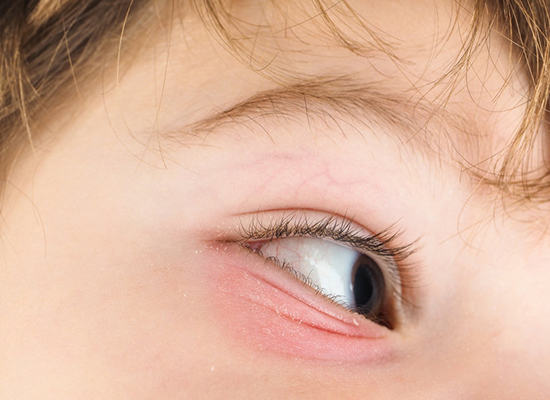
Pink Eye and When To See a Doctor
Pink eye is not an official name for a medical condition but is often used to describe conjunctivitis. Conjunctivitis is an inflammation of the clear tissue that covers the white part of your eye and the inner surface of your eyelid. A pink eye often makes your eyes feel itchy and gritty as if there is sand. Sometimes, it may appear as a symptom of another illness, such as a cold or the flu. However, it can also be caused by an allergic reaction, a bacterial or viral infection, or an irritant in the eye.
Conjunctivitis can rarely cause any problems with vision, especially if you get treatment early. It is widespread among children and can often be contagious. However, it is usually not a serious condition and will often go away on its own within 2 to 3 weeks. Sticking to the recommended treatment plan can help you get rid of pink eye and reduce the risk of long-term complications.
Causes
Viruses
The most common type of pink eye is viral conjunctivitis, caused by a virus. It often starts in one eye and then moves to the other. Viral conjunctivitis usually goes away within 2 to 3 weeks without treatment. However, you may need medication to help relieve the symptoms.
Bacteria
Bacterial conjunctivitis is another common type of pink eye caused by bacteria. Usually, only one eye is affected at first, but the infection can spread to the other eye. Bacterial conjunctivitis is generally treated with antibiotics, which can help clear the disease within a week.
Allergies
Allergic conjunctivitis often affect both eyes and is often accompanied by allergy symptoms, such as a runny nose, sneezing, and itchiness. Allergies can also cause pink eye to pollen, dust, animal dander, or other substances. Allergic conjunctivitis can be treated with over-the-counter or prescription eye drops and oral medications.
Other causes
Other less common causes of pink eye include:
An irritant in the eye, such as smoke, chlorine from a pool, or shampoo
A foreign object in the eye
A reaction to contact lenses or contact lens solutions
A blocked tear duct
Knowing the specific cause of your pink eye can help your doctor recommend the best course of treatment.
Symptoms
The presentation of pink eye may vary depending on the cause. If you have bacterial conjunctivitis, your symptoms may appear suddenly. You may notice a thick, yellow discharge from your eye that crusts over at night. Your vision may also be red and watery. In some cases, you may experience swelling of the eyelid.
If you have viral conjunctivitis, your symptoms may appear more gradually. They may start in one eye and then spread to the other. Your eyes may be watery and itchy, and you may also have a runny nose or a sore throat. Some cases of viral conjunctivitis can also cause swelling of the eyelid.
For cases of allergic conjunctivitis, your symptoms may occur seasonally or year-round, depending on your allergies. The symptoms may worsen when exposed to your trigger allergies, such as pollen or animal dander. You may have itchy, watery eyes and swelling of the eyelids. You may also have experience other allergy symptoms such as a runny nose, sneezing, or itchiness.
A pink eye may also cause some general symptoms such as :
Eye pain
Sensitivity to light
Blurred vision
Tearing
If you have any of these symptoms, you should see your doctor for a diagnosis. They can recommend the best course of treatment based on the underlying cause.
>h3>Diagnosis
A pink eye is usually diagnosed based on a physical examination and a review of your symptoms. Your doctor will ask about your medical history and whether you have any allergies. They will also perform a physical inspection of your eyes and may use a fluorescent light to look for any discharge. They may take a swab of the release from your eye to test for bacteria or viruses in some cases.
Treatment
The treatment for pink eye will vary depending on the underlying cause.
Viral conjunctivitis usually goes away within 2 to 3 weeks without treatment. However, you may need medication to help relieve the symptoms. Antibiotics will not help viral conjunctivitis and may even cause harm.
Bacterial conjunctivitis is usually treated with antibiotics, which can help clear the infection within a week. Your doctor may prescribe antibiotic eye drops or ointment. They may also recommend using a warm compress to help relieve the symptoms.
You can successfully treat allergic conjunctivitis with over-the-counter or prescription eye drops and oral medications. For more severe cases, your doctor may prescribe corticosteroid eye drops. Antihistamines can help relieve itchiness and other symptoms. Decongestants may also be used to reduce swelling.
The symptoms should go away for pink eyes caused by an irritant, such as smoke or chlorine, once you remove the irritant from your eye. You may also need to use artificial tears to help flush out the irritant. If you have a foreign object in your eye, your doctor will remove it.
When Should You See a Doctor?
You should see your doctor if you have any of the following symptoms:
Yellow or green discharge from your eye
Eye pain
Sensitivity to light
Blurred vision
Tearing
If you are experiencing these symptoms, you may have a more serious condition such as bacterial conjunctivitis. Your doctor can prescribe antibiotics to clear the infection. Sometimes, you may experience complications from pink eyes, such as vision loss. You should see your doctor right away if you experience sudden changes in your vision.
Prevention
There are some things you can do to prevent the spread of pink eye. You should avoid sharing towels, washcloths, or makeup with others. You should also clean your hands often and avoid touching your eyes. If you wear contact lenses, you should throw away any disposable lenses you used while you had the infection. Additionally, it would help if you cleaned your eyeglasses or sunglasses.
You can also help prevent pink eye by not smoking and avoiding exposure to smoke. If you work around chemicals, you should wear safety goggles to protect your eyes. Finally, you should avoid rubbing your eyes, irritating them, and making the symptoms worse.
In summary, pink eye is a common condition caused by a virus, bacteria, or allergies. The symptoms may include a runny nose, sneezing, itchiness, and redness. In some cases, you may also have a yellow or green discharge from your eye. Treatment depends on the underlying cause but may include antibiotics, antihistamines, or corticosteroid eye drops. You can help prevent the spread of pink eye by washing your hands often and avoiding touching your eyes.




